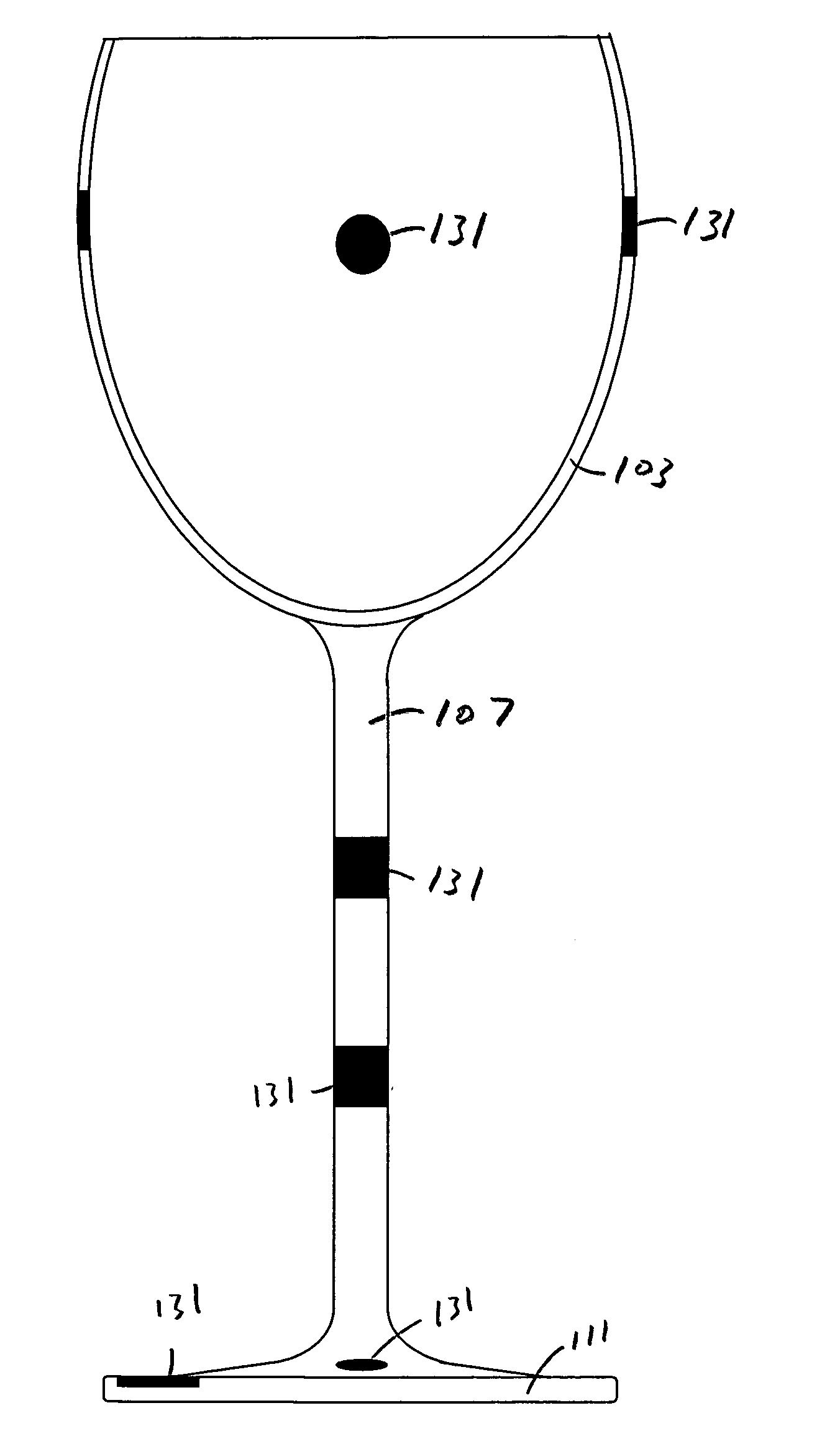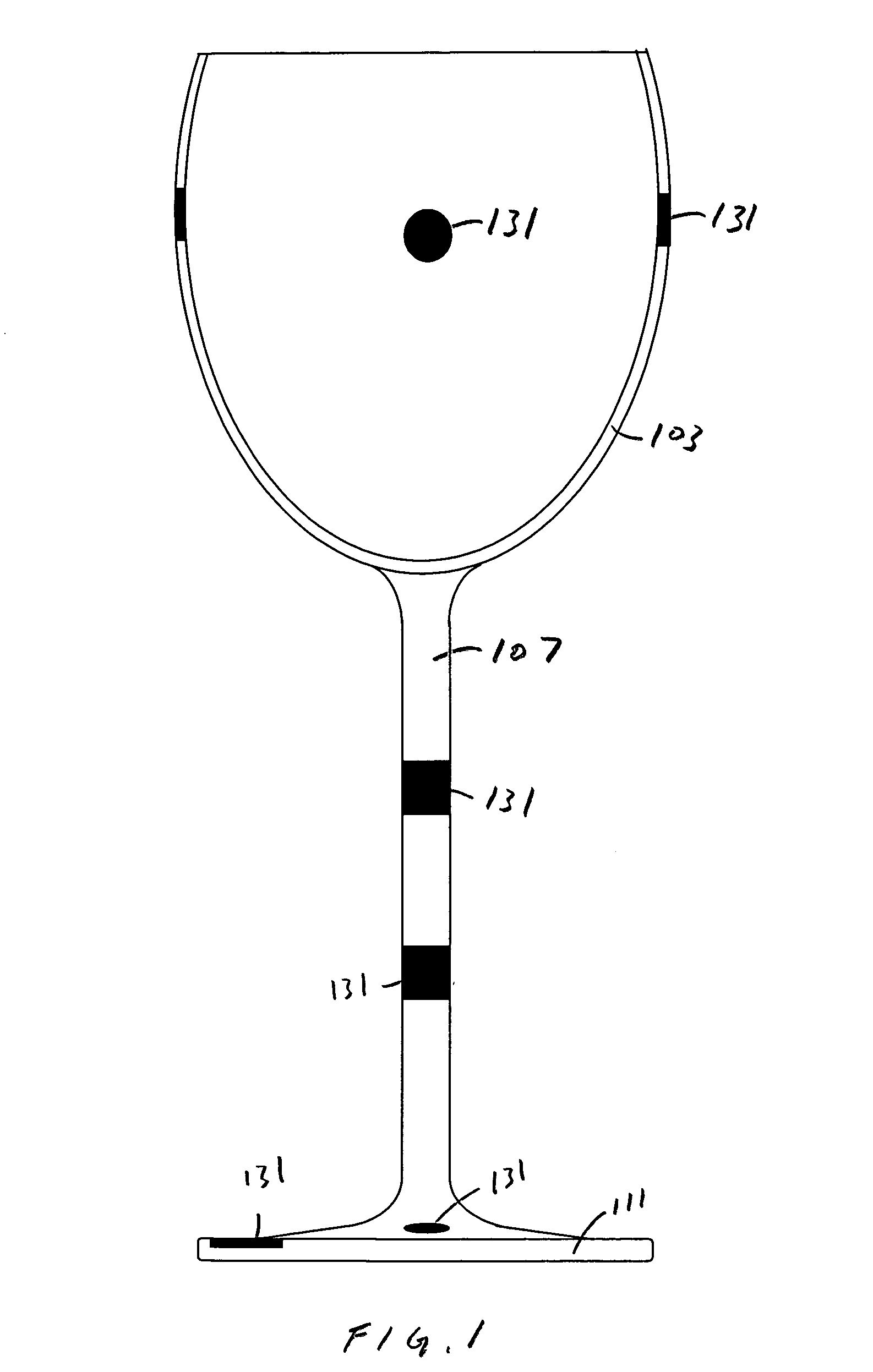Drinking glass with a removable magnetic marker
a magnetic marker and drinking glass technology, applied in the field of drinking glass with a removable magnetic marker, can solve the problems of easy loss, difficult to secure around the stem of the wine glass, easy to set a drinking glass down, etc., and achieve the effect of preventing accidental removal
- Summary
- Abstract
- Description
- Claims
- Application Information
AI Technical Summary
Benefits of technology
Problems solved by technology
Method used
Image
Examples
Embodiment Construction
[0023]With reference to FIG. 1, the present invention is a wine glass that has a cup 103, stem 107 and base 111. The upper portion of the cup 103 has a circular opening with a thin rounded lip and a thin wall section. The top of the stem 107 is attached to the bottom of the cup 103, and the bottom of the stem is attached to the base 111. The base 111 is a circular structure. The cup 103, stem 107 and base 111 are preferably made of clear glass. Although the drinking glasses are described as being made of glass, in other embodiments the drinking glasses may be made of metal, ceramic, plastic, wood or composite materials.
[0024]The glass illustrated in FIG. 1 also includes a plurality of magnets 131 that indicates some of the possible locations for the magnets. In an embodiment, the magnets 131 may be located around the perimeter of the cup 103. The magnets 131 may also be located in the stem 107 and base 111. The magnets 131 in the stem may be cylindrical while the magnets 131 in the ...
PUM
 Login to View More
Login to View More Abstract
Description
Claims
Application Information
 Login to View More
Login to View More - R&D
- Intellectual Property
- Life Sciences
- Materials
- Tech Scout
- Unparalleled Data Quality
- Higher Quality Content
- 60% Fewer Hallucinations
Browse by: Latest US Patents, China's latest patents, Technical Efficacy Thesaurus, Application Domain, Technology Topic, Popular Technical Reports.
© 2025 PatSnap. All rights reserved.Legal|Privacy policy|Modern Slavery Act Transparency Statement|Sitemap|About US| Contact US: help@patsnap.com



